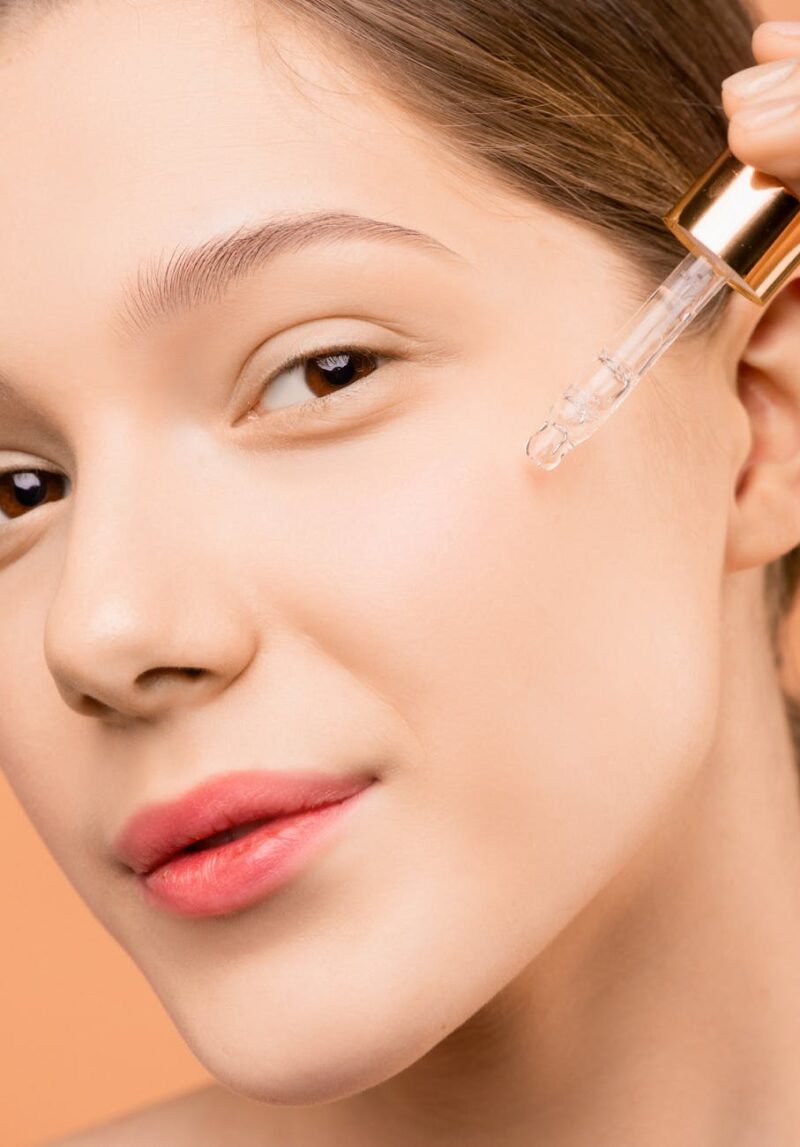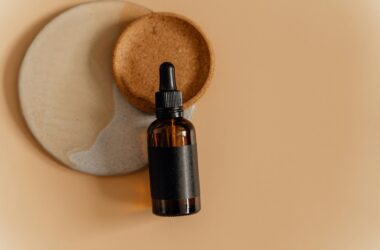If you’re one of the people who struggle with skin aging, it’s normal to ask a question like, Can you use salicylic acid and retinol at the same time?
Below, I’ll explain why these two ingredients are helpful for anti-aging, their differences, and how to combine them properly.
Can You Use Salicylic Acid And Retinol At The Same Time?
You can use salicylic acid and retinol at the same time, but you should treat your skin carefully to avoid irritation.
In general, it’s best to use one active ingredient at a time, because each one has its own benefits.
The problem with using two different active ingredients is that they may compete with each other and cancel each other out.
Treating your skin with both salicylic acid and retinol is possible, but you should take extra care when doing so.
Start with one active ingredient and see how your skin responds. If everything goes well, try adding the second active ingredient, but reduce the frequency of application for all of them to once a day and apply the products more gently than you might otherwise.
For example, if you’re using both salicylic acid and retinol on your skin, use them once every three days instead of daily. Reduce the amount of product that you’re applying as well.
You also want to make sure that you’re not putting too much stress on your skin by using two active ingredients at once.
Always start by using less than the normal amount of product that’s recommended on the label and then build up from there if your skin can tolerate it.
What Ratio Should You Use Salicylic Acid With Retinol?
There is no specific ratio that you must follow with salicylic and retinol. You just have to alternate them, use them in the right combination, and apply them at the right time of day.
For example, if you’d like to use a 0.5% salicylic acid treatment every morning, then you can use a 0.025% retinol treatment every night.
Alternately, if you’d like to use a 0.025% retinol treatment every night and a 0.5% salicylic acid treatment every morning, then that’s just as fine!
You just have to remember: Retinol should be applied at night because it makes your skin sensitive to sunlight – so never apply it during the day!
Will Retinol And Salicylic Affect Acne?
Current research into the anti-aging properties of retinol and salicylic acid has been promising. Although more research is needed, these two ingredients may help reduce the appearance of acne scarring, fine lines, and wrinkles.
What Ingredients Can I Mix With My Retinol And Salicylic Acid To Improve My Skin’s Health?
Salicylic acid and retinol are two of the most popular ingredients in skincare today.
Both have proven efficacy in terms of treating acne, clearing pores, diminishing scarring, and smoothing out fine lines and wrinkles.
However, they are also extremely potent ingredients that can cause irritation, dryness, and even burning if they’re not properly formulated or used.
That’s why it’s always a good idea to add a soothing agent like hyaluronic acid or glycerin to your skincare routine when you introduce these two ingredients.
Here’s a look at how some common ingredients can be mixed with salicylic acid and retinol for improved results:
Alpha Hydroxy Acids (AHAs)
The alpha-hydroxy acids (AHAs) are naturally-occurring acids that occur naturally in many fruits including apples, peaches, grapes, and oranges.
They help to exfoliate the skin by loosening the bonds between dead skin cells on the surface of the skin.
Glycolic acid
Glycolic acid is a type of AHA that can be found in topical skincare products such as cleansers and toners.
Glycolic acid is generally considered a mild AHA that helps to exfoliate the top layer of skin without causing redness.
Is It Okay To Use Retinol And Salicylic Acid If I’m Pregnant?
It’s generally considered safe to use salicylic acid and retinol during pregnancy. But that doesn’t mean that it’s a good idea to exfoliate with these ingredients.
While it’s true that over 80% of what your body absorbs through the skin is water, that same skin also functions as a barrier to keep out unwanted substances and protect your internal organs.
Pregnant women have an increased blood volume and circulation, so even small amounts of chemicals used on the skin have an increased chance of being absorbed through the skin and into the bloodstream.
The best advice for pregnant or breastfeeding women who want to apply topical skincare products is to be very careful about choosing the ingredients.
Many companies avoid using potentially risky ingredients like retinol and salicylic acid altogether.
And those that don’t tend to offer special formulations just for pregnant women.
They’re often labeled as “baby-friendly” or “safe for babies,” but some are just regular products with added ingredients that are said to help prevent irritation or allergic reactions in sensitive skin.
Is It Okay To Use Retinol And Salicylic Acid On My Sensitive Skin?
The answer is yes, you can use both of these products on sensitive skin, but it may not be effective for some people. For example, if you have rosacea, you may find that you do better with an AHA product like glycolic acid instead of salicylic acid.
Salicylic acid is a beta hydroxy acid that helps to exfoliate the skin.
This gives it the reputation as being an acne-fighting ingredient, which it does help with.
However, some people find that salicylic acid feels too harsh for their skin.
Are There Any Side Effects When Using Salicylic Acid And Retinol Together?
Some people worry that combining salicylic acid and retinol together might cause irritation or dryness but fortunately, neither is a common side effect when they are used together properly.
The most common side effects you may experience when using salicylic acid and retinol together include redness and peeling, similar to those caused by using each ingredient alone.
You should always follow the instructions for applying these products, which usually involves first applying a small amount to one part of your face so that you can check for any irritation before continuing to use them on other parts of your face.
If you find that both ingredients are causing irritation, try using one at a time rather than using both at once.
How To Apply Retinol With Salicylic Acid For The Most Effective Results
Applying Retinol with Salicylic Acid is a big step in any anti-aging regimen.
The proper way to do so can be confusing, so here are simple steps that will help you get the most out of this combination.
Step 1: Cleanse your skin with a gentle facial cleanser.
Step 2: Apply a thin layer of retinol cream.
Step 3: Leave the retinol on for about five minutes before you apply the salicylic acid. This allows for the absorption of retinol into your skin.
Step 4: Apply another thin layer of salicylic acid and allow it to absorb into your skin.
Step 5: Repeat this process every night if you are just starting out, or if you have sensitive skin, every other night. You can increase the frequency as your skin becomes more tolerant to these products.
Step 6: If you want some added benefits once you get used to using the two products separately, use them together at the same time. You can do this by applying each product in succession, or by mixing them together in one application.
Step 7: Wash your face before going to bed, and then apply moisturizer to keep your skin hydrated. Use an oil-free moisturizer that is light and won’t clog your pores and cause breakouts.
Step 8: Make sure that you are using sunscreen every day even if it’s over top of these products because they do make your skin more sensitive to sun damage.
Final Thoughts
In a nutshell, yes, you can use retinol and salicylic acid together. If the products are well formulated, they should work together in harmony to exfoliate your skin.







